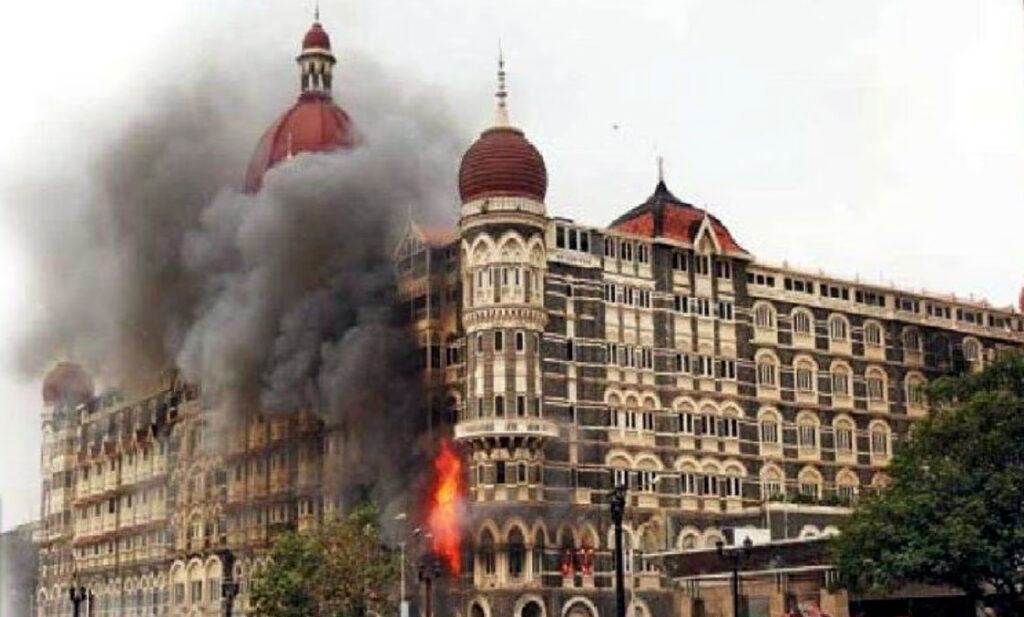
Sixteen years have passed since the fateful night of November 26, 2008, when Mumbai, the bustling heart of India, was gripped by terror. The 26/11 attacks, as they came to be known, were not only an assault on India’s financial capital but also a brutal reminder of the vulnerability of peace in a world plagued by extremism. The attacks left a scar on the nation’s collective consciousness, yet they also revealed the indomitable spirit of its people.
A Night of Horror
The ten heavily armed terrorists who infiltrated Mumbai over the Arabian Sea on the evening of November 26, 2008, were trained and provided by the Pakistan-based organization Lashkar-e-Taiba. In the four days that followed, the city was turned into a battlefield. The Chhatrapati Shivaji Maharaj Terminus (CSMT) railway station, the bustling Leopold Café, and well-known locations like as the Oberoi Trident, Nariman House, and the Taj Mahal Palace Hotel were all devastated beyond recognition.
166 people were killed in these meticulously organized strikes, including 18 security personnel and 26 foreigners, while over 300 more were injured. The deaths, which included first responders, hotel staff, commuters, and tourists, were a depressing reminder of the indiscriminate nature of terrorism.
A Timeline of Tragedy
- November 26, 2008: Around 9:30 PM, the terrorists unleashed a wave of gunfire at CSMT, killing dozens. Simultaneously, attacks erupted at Leopold Café and the Oberoi Trident.
- November 27-29, 2008: The siege at the Taj Mahal Palace Hotel and Nariman House continued, as terrorists held hostages and engaged in gunfights with security forces.
- November 29, 2008: By early morning, the National Security Guard (NSG) neutralised the last remaining attackers at the Taj.
The lone surviving terrorist, Ajmal Kasab, was captured and later sentenced to death after a historic trial that shed light on the planning and execution of the attacks.
Heroes Amid the Chaos
Amid the horror, stories of heroism emerged, embodying Mumbai’s resilient spirit. Brave police officers, such as Tukaram Omble, sacrificed their lives to capture Kasab alive, providing crucial evidence of Pakistan’s involvement. The NSG commandos and Mumbai Police displayed exceptional courage in neutralising the attackers and rescuing hostages. Hotel staff at the Taj and Oberoi put their lives at risk to save guests, exemplifying selflessness in the face of terror.
Lessons Learned and Challenges Ahead
The 26/11 attacks exposed significant gaps in India’s security apparatus, from inadequate coastal surveillance to delays in response. In the aftermath, the government established the National Investigation Agency (NIA) and bolstered anti-terror measures, including better coordination between intelligence agencies and the establishment of specialised forces.
However, the threat of terrorism persists, reminding us of the need for constant vigilance. Strengthening global cooperation against terrorism and addressing its root causes remain critical in preventing such tragedies.
A Legacy of Resilience
As we remember the victims and honour the heroes of 26/11, we also reflect on the resilience of Mumbai and its people. The city, often described as the lifeline of India, rebounded with remarkable strength, refusing to succumb to fear.
Sixteen years later, the memories of that dark November remain vivid, serving as a solemn reminder of the cost of complacency and the strength of unity. Mumbai’s story is not just one of tragedy but also of courage, perseverance, and hope—a testament to the enduring spirit of humanity in the face of terror.
